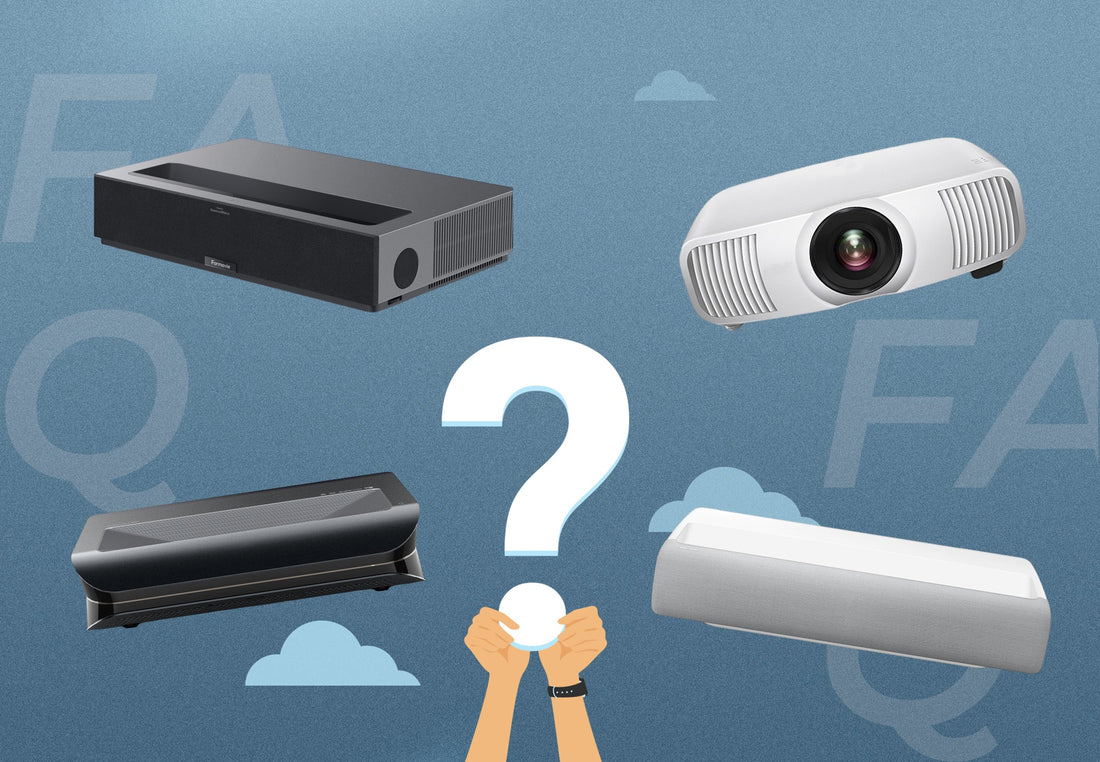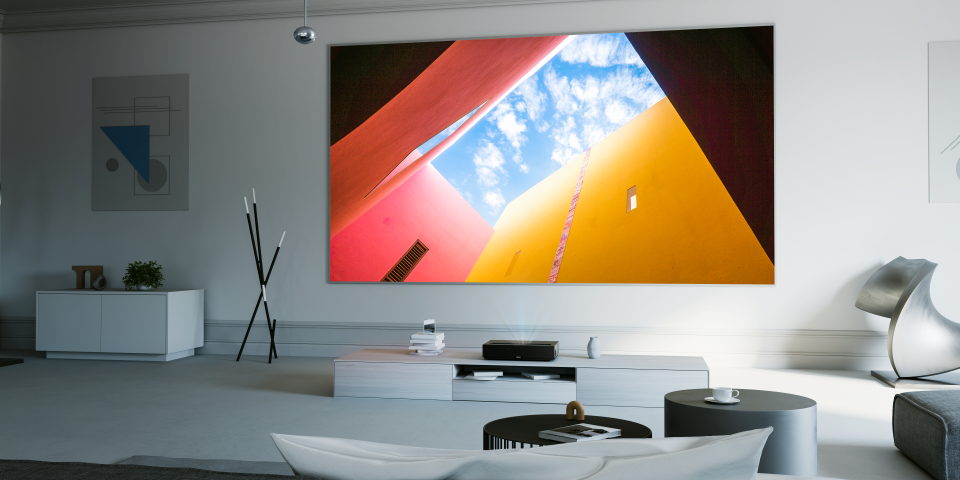Home Theater Projector Buyers Guide: Answering Frequently Asked Questions

Having a projector as part of your home theater is crucial, but there are a few factors to consider before going out to buy the projector you think is the best, such as the ideal resolution for a projector, the maximum brightness, and contrast levels. These are some of the most frequently asked questions (FAQ) by people who are in search of the perfect home theater projector, and they can help you make the best decision for your projector based on your preferences.
Today’s blog will answer these and more FAQs alongside a detailed data sheet of some of the best home theater projectors currently on the market, to help you get a better idea of the benefits, disadvantages, and reasons to choose either the Formovie THEATER or its closest competitors based on your needs.
What Is the Best Resolution for a Home Theater Projector?

The best resolution for your projector will be largely determined by personal preferences such as what you intend to use the projector for, the viewing distance, and your budget. If the only goal is to wind down in the evening watching movies sometimes, then you may not need as much detail and resolution as someone who plans to use the projector to play high-res video games at any time of day. The most common projector resolutions are 1080p and 4K UHD. Let’s take a closer look at what this means:
1080p Projector
A projector with a 1080p resolution has 1920 x 1080 pixels to deliver the standard resolution for Full HD content, which is why some 1080p projectors are known as Full HD projectors. This resolution is excellent for small to mid-sized screens, making these projectors a popular and budget-friendly option.
4K UHD
Projectors with 4K Ultra High-Definition (UHD) resolution have four times more pixels than 1080p projectors, with a total of 3840 x 2160 pixels for incredible display clarity. The increase in pixels makes these projectors more suitable for larger screen displays, proving more detail and contrast than a Full HD projector.
How Many ANSI Lumens Do I Need in a Well-Lit Room?

A room with ambient lighting will require a projector with sufficient brightness. As a general rule, aim for a projector with 2000 ANSI lumens or higher, enough brightness to deliver an excellent display in a room with moderate ambient light such as a living room or office conference room. An article on GaGadgets suggests that you need at least 1000 ANSI lumens in a dimly lit area, at least 2000 ANSI lumens in an area with moderate lighting, no less than 3000 ANSI lumens when there is high ambient light, and a minimum of 4000 ANSI lumens outdoors during the day.
Should I Consider the Projector’s Contrast Ratio?

The projector’s contrast ratio is just as important as the brightness because a display with too much brightness and not enough contrast will have a washed-out image. A projector with a high contrast ratio can display contrasting colors right next to each other effortlessly, with the basic rule being that a contrast level of 1000: 1 means that the white image can be displayed 1000 times brighter than the dark image even when they’re placed right next to each other.
A high contrast ratio indicates that the projector can display a wider range of brightness levels. Projector Screen.com says that contrast can be affected by the picture mode and the brightness of the room or projector, and they suggest looking at a home theater projector with a contrast ratio of at least 2000:1.
What is the Difference Between Standard Throw and Short Throw Projectors?

The throw ratio describes the distance from the projector to the screen in contrast with the size of the screen. A projector with a standard throw requires more distance away from the screen to display a full picture of no less than 80 inches, about 3 meters. On the other hand, a short throw projector would require about half of that space to achieve a display of the same size, and an ultra-short throw projector would need even less. There are a few advantages and disadvantages that make each type of projector unique.
Pros and Cons of a Long Throw Projector
Pros
- Ideal for outdoor use
- The best option for very large rooms and conferences
- Cost Effective Option
Cons
- High chance of shadows casting on the screen because of the free space
- Limited to being used in large spaces
- Regular maintenance is required
- Needs to be mounted or placed securely at eye level with a tripod
Pros and Cons of a Short-Throw Projector
Pros
- Ideal for small spaces
- Reduces the risk of shadows on the display
- Low maintenance
- Minimal repairs
Cons
- Costs more than a standard projector
Competitor Comparison: Data Sheet for Home Theater Projectors
To better understand what the best home theater projectors in the market have to offer in terms of resolution, brightness, and contrast, we’ve put the Formovie THEATER up against some of its closest competitors so you can formulate a side-by-side comparison. The data sheet will also consider the throw ratio, connectivity options, and price range for the Epson LS11000, Samsung LSP7T Premiere, and AWOL LTV-3500 home theater projectors.


Owning the Best Home Theater Projector Starts with being Informed
Remember that the main factors to consider when buying a home theater projector are resolution, brightness, contrast, and throw ratio. Comparing these four main specs alongside the connectivity options, and the projector’s price will help you to make the most informed decision for a projector that will last for years to come. For the best comparison, always make use of the specs and data sheets provided by the manufacturer or trusted review websites.

